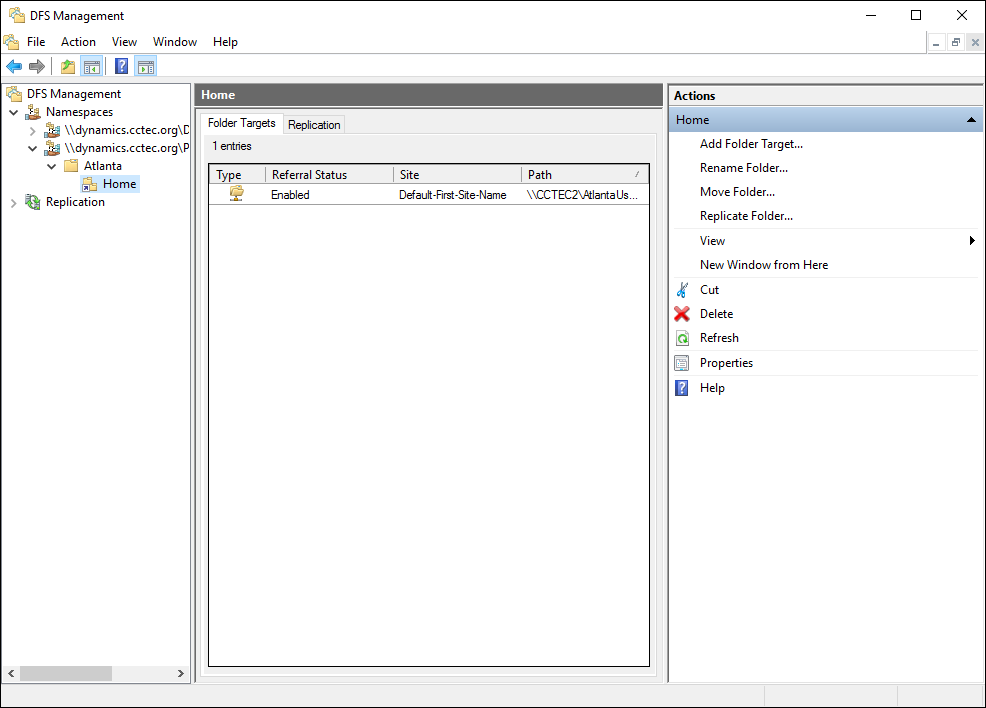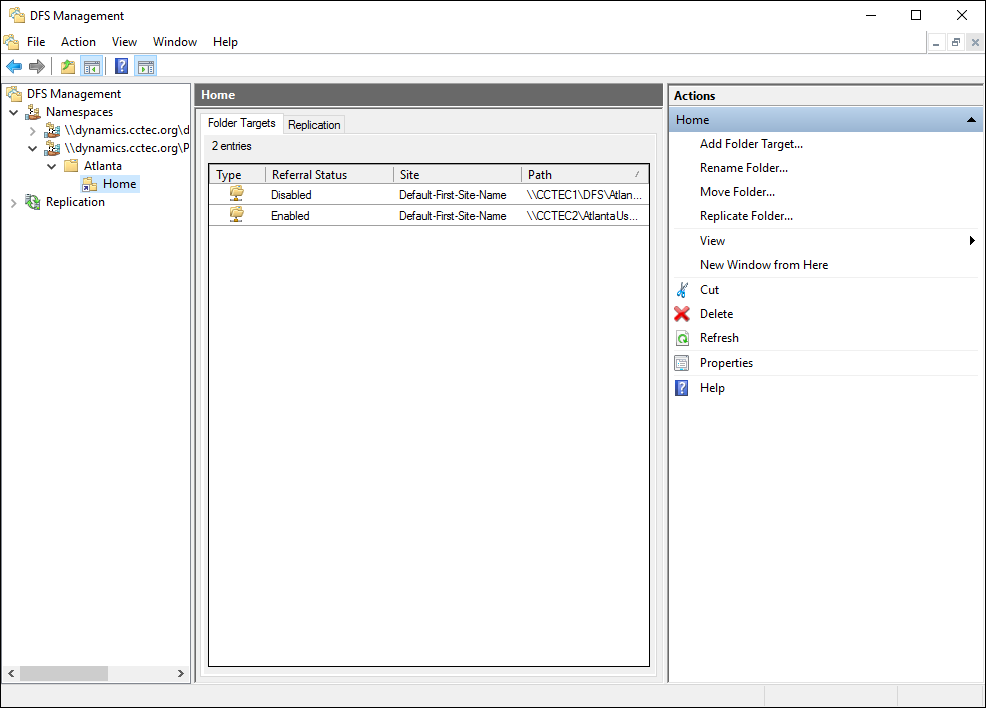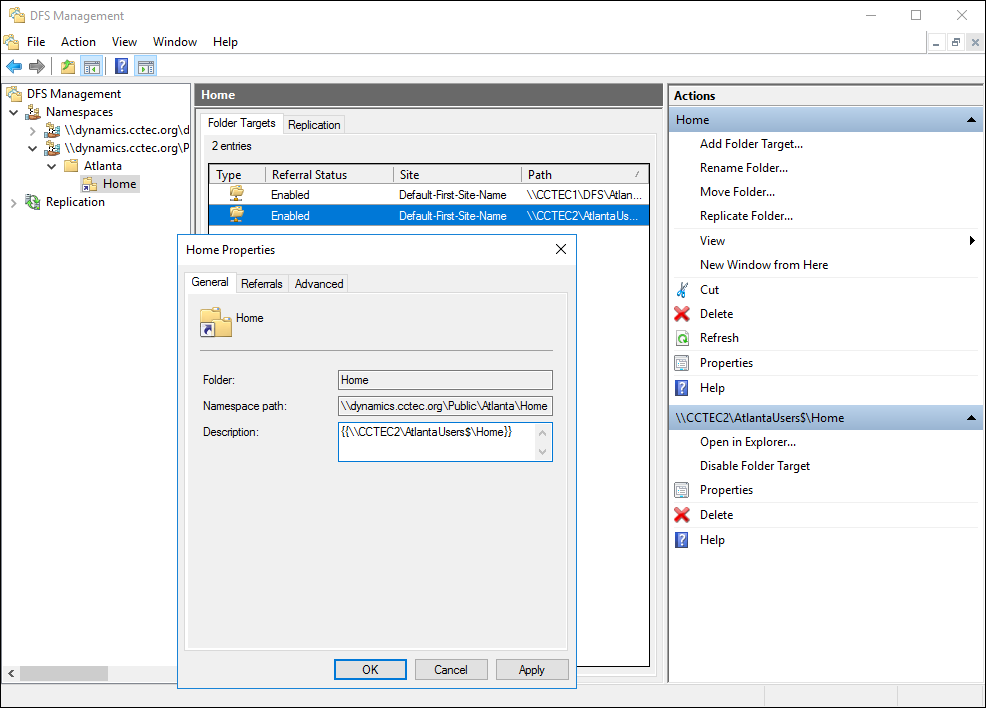C.3 Configuring DFS Folders
File Dynamics requires definite paths in its policies. Because namespaces can provide multiple targets for DFS links and thereby introduce ambiguity, a DFS namespace must be configured with one of the following three options:
C.3.1 Providing Only One Target Per DFS Link
The simplest way to guarantee that File Dynamics has unambiguous DFS paths is to give each DFS link a single target.
In the following graphic, there is just one target path and it is enabled.
Figure C-1 One Target Path

C.3.2 Disabling All But One Target Per DFS Link
If a DFS namespace is used for high availability, such as ensuring that users can access a replicated copy of their data, it might be appropriate to create multiple targets in a DFS link and disable all but one. If the enabled link target becomes unavailable, an administrator can disable the downed target and enable a replication target. As long as only one target is enabled for a given DFS link, File Dynamics can successfully provision and manage storage through the DFS path.
In the following graphic, there are multiple target paths, but only one is enabled.
Figure C-2 Multiple Target Paths with One Enabled

C.3.3 Enabling Multiple Target Paths
File Dynamics can parse the description field on a DFS folder to determine which of several enabled targets is the primary, unambiguous target. This allows File Dynamics to manage namespaces with multiple enabled targets in a DFS link.
To do this, the description for the DFS link must enclose the complete UNC path of the path File Dynamics should use in double curly braces. For example, {{\\Server\Share\Path}}. This must be identical to the UNC path in the target link; it cannot be a subdirectory.
In the following graphic, there are two target paths enabled.
The Home Properties dialog box is accessed by double-clicking the listing in the DFS Management console.
Figure C-3 Two Target Paths Enabled
